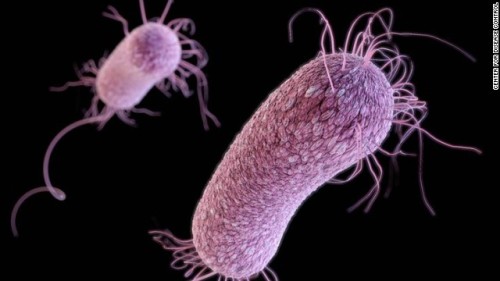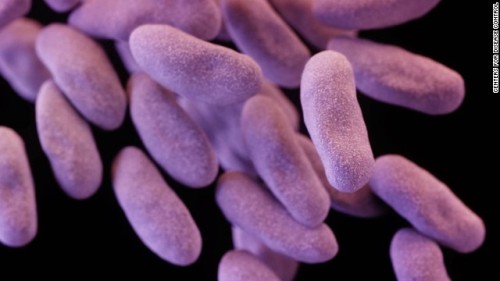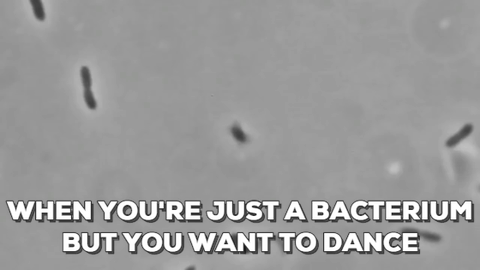Bio100cia-blog - BIO100CIA

More Posts from Bio100cia-blog and Others
Clostridium difficile

Acinetobacter

Streptococcus pneumoniae

Extended-spectrum β-lactamase (ESBLs)

Enterococcus

Staphylococcus aureus

Pseudomonas aeruginosa

Enterobacteriaceae

Shigella

Neisseria gonorrhoeae

Candida

Campylobacter

Tuberculosis

Salmonella



Bacteria and fungi in petri dishes
Klari Reis uses plastics, paints and other mediums to create the idea of bacteria and biological matter within petri dishes

From the observed rate of expansion, astronomers can estimate the age of the universe. For every year, light travels one light-year across space. So the farthest parts of the universe that we can see are as distant in light-years as the universe is old in years. Light from more distant regions has not had time to reach us. This distance marks the limits of the observable universe–our “cosmic horizon.” Image: NASA Hubble Space Telescope

Terrifying. 🎃


Scientists have created a mutant enzyme that breaks down plastic drinks bottles – by accident. The breakthrough could help solve the global plastic pollution crisis by enabling for the first time the full recycling of bottles.
The new research was spurred by the discovery in 2016 of the first bacterium that had naturally evolved to eat plastic, at a waste dump in Japan. Scientists have now revealed the detailed structure of the crucial enzyme produced by the bug.
The international team then tweaked the enzyme to see how it had evolved, but tests showed they had inadvertently made the molecule even better at breaking down the PET (polyethylene terephthalate) plastic used for soft drink bottles. “What actually turned out was we improved the enzyme, which was a bit of a shock,” said Prof John McGeehan, at the University of Portsmouth, UK, who led the research. “It’s great and a real finding.”
Continue Reading.

We guess it keeps the relationship exciting…


here’s a happy cell to welcome summer :)
-
 bio100cia-blog reblogged this · 6 years ago
bio100cia-blog reblogged this · 6 years ago -
 rapemindfuckbrain-blog liked this · 7 years ago
rapemindfuckbrain-blog liked this · 7 years ago -
 iamacyborglunarprincess liked this · 7 years ago
iamacyborglunarprincess liked this · 7 years ago -
 nymphetamisty6669-blog liked this · 7 years ago
nymphetamisty6669-blog liked this · 7 years ago -
 le-dauphin-dauphin-blog liked this · 8 years ago
le-dauphin-dauphin-blog liked this · 8 years ago -
 theprincesspirateofthehighseas liked this · 8 years ago
theprincesspirateofthehighseas liked this · 8 years ago -
 escapist-culture liked this · 8 years ago
escapist-culture liked this · 8 years ago -
 lobudise liked this · 8 years ago
lobudise liked this · 8 years ago -
 sassystackofpancakes reblogged this · 8 years ago
sassystackofpancakes reblogged this · 8 years ago -
 photonic-pulsar liked this · 8 years ago
photonic-pulsar liked this · 8 years ago -
 monkeyshepherd liked this · 8 years ago
monkeyshepherd liked this · 8 years ago -
 shakethabooooooty-blog liked this · 8 years ago
shakethabooooooty-blog liked this · 8 years ago -
 roly1poly1rosy liked this · 8 years ago
roly1poly1rosy liked this · 8 years ago -
 tableofknowledge liked this · 9 years ago
tableofknowledge liked this · 9 years ago -
 fangirlnerdygirl-blog reblogged this · 9 years ago
fangirlnerdygirl-blog reblogged this · 9 years ago -
 fangirlnerdygirl-blog liked this · 9 years ago
fangirlnerdygirl-blog liked this · 9 years ago -
 glittermeat liked this · 9 years ago
glittermeat liked this · 9 years ago -
 yseson liked this · 9 years ago
yseson liked this · 9 years ago -
 paismaycare reblogged this · 9 years ago
paismaycare reblogged this · 9 years ago -
 weareallmadaroundhere-blog liked this · 9 years ago
weareallmadaroundhere-blog liked this · 9 years ago -
 tomgleesonmusic liked this · 9 years ago
tomgleesonmusic liked this · 9 years ago -
 raisedbydruidsandhorses reblogged this · 9 years ago
raisedbydruidsandhorses reblogged this · 9 years ago -
 raisedbydruidsandhorses liked this · 9 years ago
raisedbydruidsandhorses liked this · 9 years ago -
 paismaycaresite reblogged this · 9 years ago
paismaycaresite reblogged this · 9 years ago -
 paismaycare reblogged this · 9 years ago
paismaycare reblogged this · 9 years ago -
 hgdawn reblogged this · 9 years ago
hgdawn reblogged this · 9 years ago